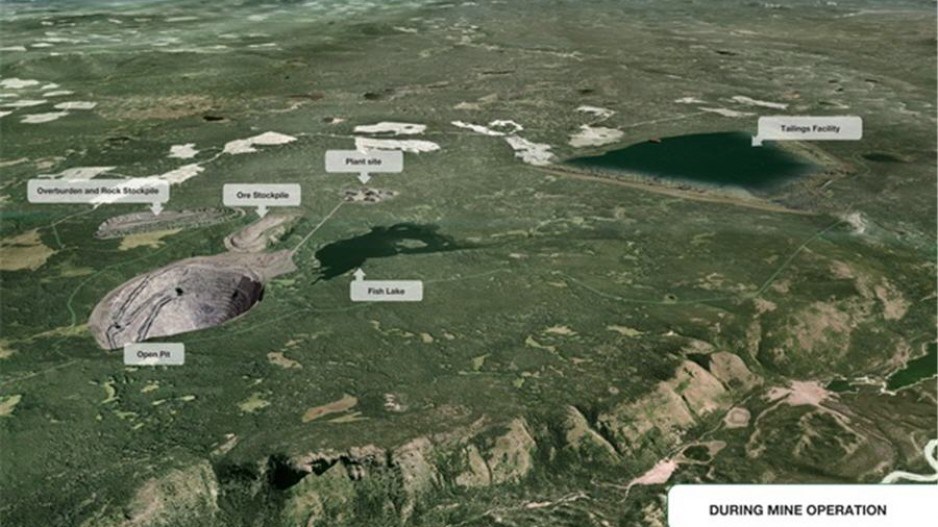The BC Supreme Court has upheld a provincial permit allowing for exploration and geotechnical work for the New Prosperity Mine, despite the project being rejected twice by the federal government.
The decision by no means permits the mine’s construction. The company still has a long legal row to hoe on that score. But it does permit Taseko Mines (TSX:TKO) to conduct geotechnical work. That work is, in fact, a provincial requirement.
As part of the provincial government’s environmental assessment certificate, certain geotechnical work was required. This includes cutting trees, building new access trails and drilling up to 122 test holes. The work needs to be done before the provincial government’ environmental certificate expires in 2020.
The problem for Taseko is that the federal government has twice rejected its New Prosperity mine, which lies just outside the area that the Supreme Court of Canada recognized in 2014 as traditional Tsihqot’in First Nation territory.
That’s another problem: The Supreme Court of Canada’s decision in 2014 strengthened the Tsilhqot’in’s position with respect to asserting its rights in the region.
In 2014, the Supreme Court of Canada recognized the Tsihqot’in have outright title to a small amount of land within Tsihqot’in claimed area, plus rights to hunt, trap and catch wild horses outside that core area. Not long after, the Tsilhqot’in declared the area a tribal park (Dasiqox Tribal Park).
The courts have acknowledged that the mine and exploratory work approved by the province would have an impact on Tsihqot’in traditional rights and, as such, required deep consultation. Of particular concern is the impct on a lake known as Teztan Biny (Fish Lake).
The fact the Tsihqot’in remain adamantly opposed to the work does not mean the province failed to properly consult them when it approvaed the geotechnical work that its EA certificate requires, the BC Supreme Court recently ruled.
“While reconciliation may not be achieved because of an honest disagreement over whether the project should proceed, that does not mean the process was flawed,” Justice Ward Branch writes.
But what is the point of doing exploratory and geotechnical work if the federal government has twice rejected the mine proposal?
As the company argued in court, the federal government did reject both the Prosperity and New Prospertiy mine proposals, but left the door open for a revised proposl.
The last time the federal government rejected the mine proposal, it issued a news release in which the federal minister of Environment at the time was quoted as saying that the ministry “invites the submission of another proposal that addresses the government’s concerns.”
“What the federal government has actually stated is that the mine cannot be justified as proposed and invites the company to come back with a new plan that deals with the significant adverse effects determined by the panel,” the company writes in its submission to the court.
The company added that “if exploration work in B.C. cannot proceed unless the outcome is guaranteed to be a mine then there will be no more exploration In B.C."
Having lost the latest round in court, the Tsilhqot’in is now focused on political pressure. The Tsilhqot’in are now asking the NDP government to step in and cancel the permit issued under the previous Liberal government.
“The BC Government made a commitment to implement the rights of Indigenous Peoples and we are calling on the BC Government to commit to honour those rights, as our Nation aspires to protect Teztan Biny,” Chief Russell Myers Ross, vice chairman of the Tŝilhqot’in National Government, said in a press release.




